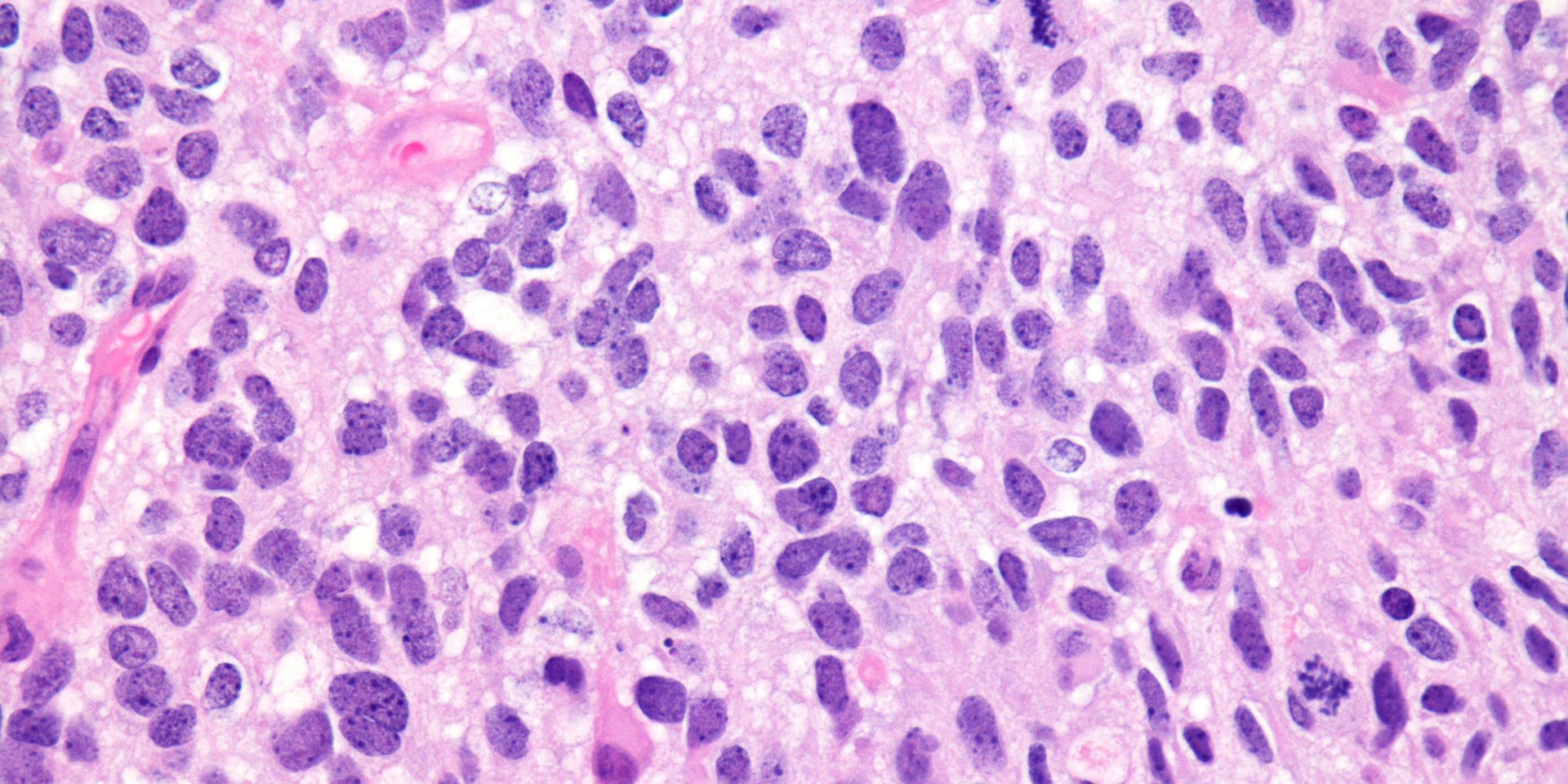Current Research at the Vitanza Lab
Pediatric CNS Tumor Model Development

Diffuse intrinsic pontine glioma (DIPG) is a universally fatal tumor of the brainstem, most commonly affecting young children. Due to its location, surgical resection is not achievable, but consideration of a biopsy has become standard practice at children's hospitals with the appropriate neurosurgical expertise. While the decision to obtain a biopsy should be directed by the presence of atypical radiographic features that call the diagnosis of DIPG into question or the requirement of biopsy tissue for clinical trial enrollment, once this precious tissue is available its use for research should be considered.
The majority of DIPG and diffuse midline glioma, H3K27-altered (DMG) models are autopsy-derived or genetically engineered, each of which are incredibly important but have limitations for translational studies. The use of biopsy tissue for laboratory model development provides an opportunity to create unique model systems from tumors that have yet to receive any treatment, and thus replicate the initial disease. Given developments in the ability to analyze DIPG tumor tissue to deepen biological understanding of this disease and develop new therapies for treatment, together with the safety of brainstem biopsy, we have developed a detailed laboratory protocol for the generation of treatment-naïve biopsy-derived DIPG/DMG models.
Seattle Children’s and the Vitanza Lab are honored to be considered a Center of Excellence by the Swifty Foundation and their Gift from a Child initiative. For some patients and families, the donation of tumor after death is a step in honoring their journey and continuing to fight cancer. While this option is not the right choice for every family, this generous act can be important for many families. Our program partners with Gift from a Child to provide a destination for tumors to be compassionately processed and shared with the national and international research community so that they can contribute to better understanding of these tumors and to the identification of future, curative treatments.
Engineering CAR T Cells and Other Immune Cells

CAR T cells can be made by removing a small amount of a patient’s T cells (which are best known for eliminating infections), genetically engineer them to fight against a cancer target, and then return them to a patient so that they have their own immune system now providing personalized tumor-targeting. This approach has been successful in curing children with leukemia but has faced obstacles against pediatric brain and spinal cord tumors.
Here is an animation of how CAR T cells work:
One major obstacle is that brain and spinal cord tumors are not clonal diseases, meaning not every cell is identical. Therefore, it can be challenging to identify the best tumor surface target (or antigen) that a CAR T cell should attack. The Vitanza Lab has worked with CAR T cells against a range of targets, including CAR T cells that can target multiple things at a time. The Lab continues to study what are the best targets for different types of brain and spinal cord tumors and if CAR T cells can be more effective if they target more than one antigen at a time.
Another obstacle is CAR T cell trafficking. For patients with leukemia, CAR T cells are delivered into the blood which is a closed circuit where T cells naturally traffic. To overcome the blood-brain-barrier and to limit toxicity to the rest of the body, most of the Vitanza Lab’s CAR T cells work focuses on therapies delivered directly into the brain’s cerebrospinal fluid (CSF). The CSF is a more challenging environment for T cells, so we have engineered CAR T cells that are better equipped to migrate from the CSF toward the tumor in the hope of a better treatment effect and less toxicity to the rest of the brain.
Targeting Molecular Vulnerabilities of DIPG

The Vitanza Lab has worked to identify molecular vulnerabilities in DIPG and DMG tumors. Their discoveries have fueled laboratory studies of drugs inhibiting HDACs, the JAK/STAT pathway and the PI3K pathway in an effort that could be used for the treatment of DIPG, DMG and other life-threatening central nervous system (CNS) tumors.
In the clinic these drugs are now being trialed in early phase trials for children with otherwise fatal CNS tumors, while in the lab studies are ongoing to combine these molecularly targeted agents with chemotherapy and immunotherapies to uncover the best possible treatment regimens for patients.
Combinatorial Treatment Regimens Against Brain Tumors

While the Vitanza Lab works to identify the most effective molecularly-targeted treatments and the best CAR T cells against brain and spinal cord tumors, it is very likely that cures will come faster with combination therapies. For many other previously incurable pediatric cancers (such as leukemia or high-risk neuroblastoma), multi-agent treatment regimens were critical in curing more patients.
The Lab works with national and international partners to identify what drugs work best in direct combination against tumors such as ATRT, DIPG, DMG, ependymoma, and medulloblastoma. Other work leverages drugs that may not be very effective directly against the tumor but do have an ability to “prep” the tumor or the tumor immune microenvironment for other later therapies. This sequential approach that maximizes the benefit of a range of different drugs and engineered immune cells could provide better treatment options for children and young adults in the future.
CAR T Cell Immunotherapy Clinical Trials

CAR T cells are a patient’s T cells that are engineered to be able to better fight diseases like cancer. The Vitanza Lab uses CAR T cells targeting tumor antigens (such as B7-H3, EGFR, HER2, and IL-13ra2) that are on the surface of pediatric central nervous system (CNS) tumors at much higher levels than on normal brain and spinal cord. This provides a targeted way for a patient’s own immune system to better fight the tumor. We aim to optimize CAR T cells against pediatric CNS tumors by engineering them to have better effector function and enhanced migration in order to support a pipeline of clinical trials.
As Seattle Children’s CNS CAR T cell Lead, Dr. Vitanza and a large team have helped develop one of the largest and most innovative CNS CAR T cell programs in the world. Seattle Children’s offers Phase 1 clinical trials using CAR T-cell therapy for brain and spinal cord tumors in children and young adults. These include BrainChild-01, -02, -03 and -04.
Seattle Children’s runs simultaneous clinical trials. This means that rather than waiting for the results of one trial before starting the next one, we share and apply knowledge that we gain from the trials while they are still ongoing. This process allows us to learn from open trials while also researching new treatments.
For more information about BrainChild studies, call 206-987-2106 or send us an email.
Comprehensive Program for Children with DIPG/DMG

The goal of the Vitanza Lab is to find new treatments that are both safe and curative for high-grade, aggressive pediatric brain and spinal cord tumors, such as diffuse intrinsic pontine glioma (DIPG), diffuse midline glioma H3K27-altered (DMG) and atypical teratoid rhabdoid tumor (ATRT).
Our central efforts include:
- Comprehensive and coordinated clinical care designed to address each child’s needs and circumstances
- Innovative laboratory studies that help us better understand these tumors, predict their behavior and treat them more effectively
- Clinical trials of new therapies, including CAR T-cell immunotherapy
Find out more information about the DIPG Research Program.
